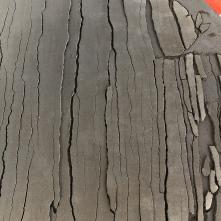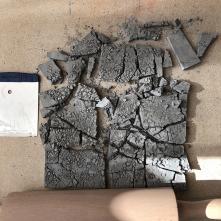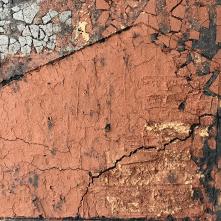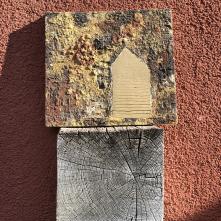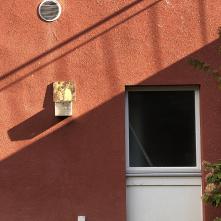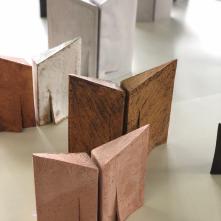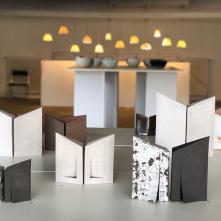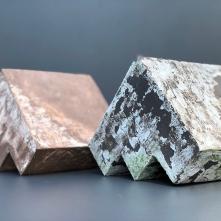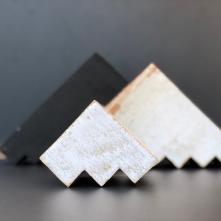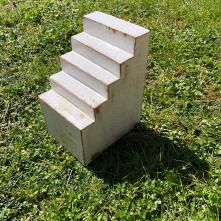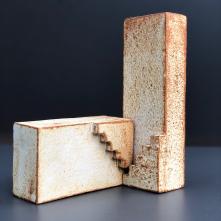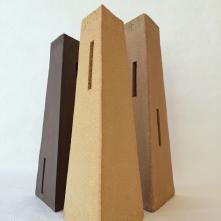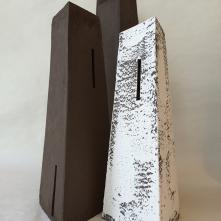
Reflecting upon architecture as a human intellectual and cultural product that in turn shapes its very existence is at the heart of my ceramic work. Due to my civil engineering education and gender studies scholar background, I have always interested in how we build our homes and cities both physically and metaphorically.
In my previous work Reflections, I look for some answers to these questions: Why do we make this type of houses but not the others? Why do we choose or how are we forced to live in these cities? What do these buildings do to us? What symbols do they carry?
The architectural elements such as doors, stairs, bridges, or buildings interest me not only as sculptural forms but analogies of how we think, interact, or remember. In my recent work, Dare, I have looked at the dualities in our thinking such as private vs public, interior vs exterior, boundaries vs passageways as they are symbolized in and by architecture.
The spaces and meanings created by the groupings of multiple pieces is an essential part of my work. I observe the hierarchy created by different sizes of the same form or search for the sameness in their seemingly identical nature yet see the subtle differences between the pieces.
I usually employ slab-building techniques and use grogged stoneware either high or bisque-fired. Each piece is carefully constructed by hand with precision. This calculated approach contrasts with the rough inherent texture of the clay. By focusing on the form and consciously omitting any ornament, I want to reveal the true nature of clay as an ancient and never exhausting material of human dwellings.
I am currently interested with the traces of ancient or demolished buildings left over the existing ones. Bringing down a building whether it is a simple dismantling of an old structure or destroying an entire city due to conflict leave its marks over the remaining ones.
I am constructing my new project, Fragments at the Bruckner Foundation, around the stories of the past that could be traced back and contemplated through these remnants, these unintentional textures of memory. When the boundaries of a structure demolished, these once private spaces become public; the interior happens to be exterior; the present turns into memory.



